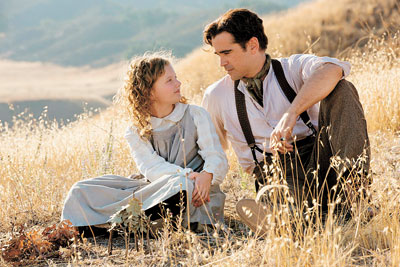
This film is based on a true story in Hollywood history.
When Walt Disney wanted to buy the rights to P.L. Travers’ popular book “Mary Poppins,” the author insisted on* just two things: that she would have a say in the script and that there would be no animation*.
History shows that she didn’t exactly get her way*, at least as far as the animation was concerned. But the film suggests that Travers put up a good fight with Disney.
The film uses flashbacks* to show how Pamela Lyndon Travers’ unhappy childhood led to the cheerful story of Mary Poppins, making her so protective of her work.
Disney spent 20 years trying to buy the film rights to the book, an effort he began in the 1940s as a promise to his two daughters. Travers then travels from London to Hollywood in 1961 to finally discuss the issue.
During her stay in California, Travers thinks about her childhood in 1906 Australia, a hard time for her family. That not only led her to write, but also inspired the characters in her 1934 book.
She loved and admired most her father, Travers Goff, a troubled banker who, before his death that same year, gives his daughter both love and enlightenment*. He would be the muse* for the story’s patriarch*, Mr. Banks, the character that the famous nanny comes to help.
While unwilling* to give Disney the film rights, Travers comes to realize that the famous Hollywood storyteller has his own motives* for wanting to make the film. Like the author’s, they point to the relationship he shared with his own father.
As well as the outstanding performances by the cast, good film-making skills add polish* to the film.
The picture gets an extra lift from the wide use of the great original songs written by the Sherman Brothers for Disney film “Mary Poppins,” which go nicely with Thomas Newman’s newly composed music. They’re woven into the story and used for dramatic moments, making this some kind of a musical in itself, but with borrowed songs. (SD-Agencies)
|

